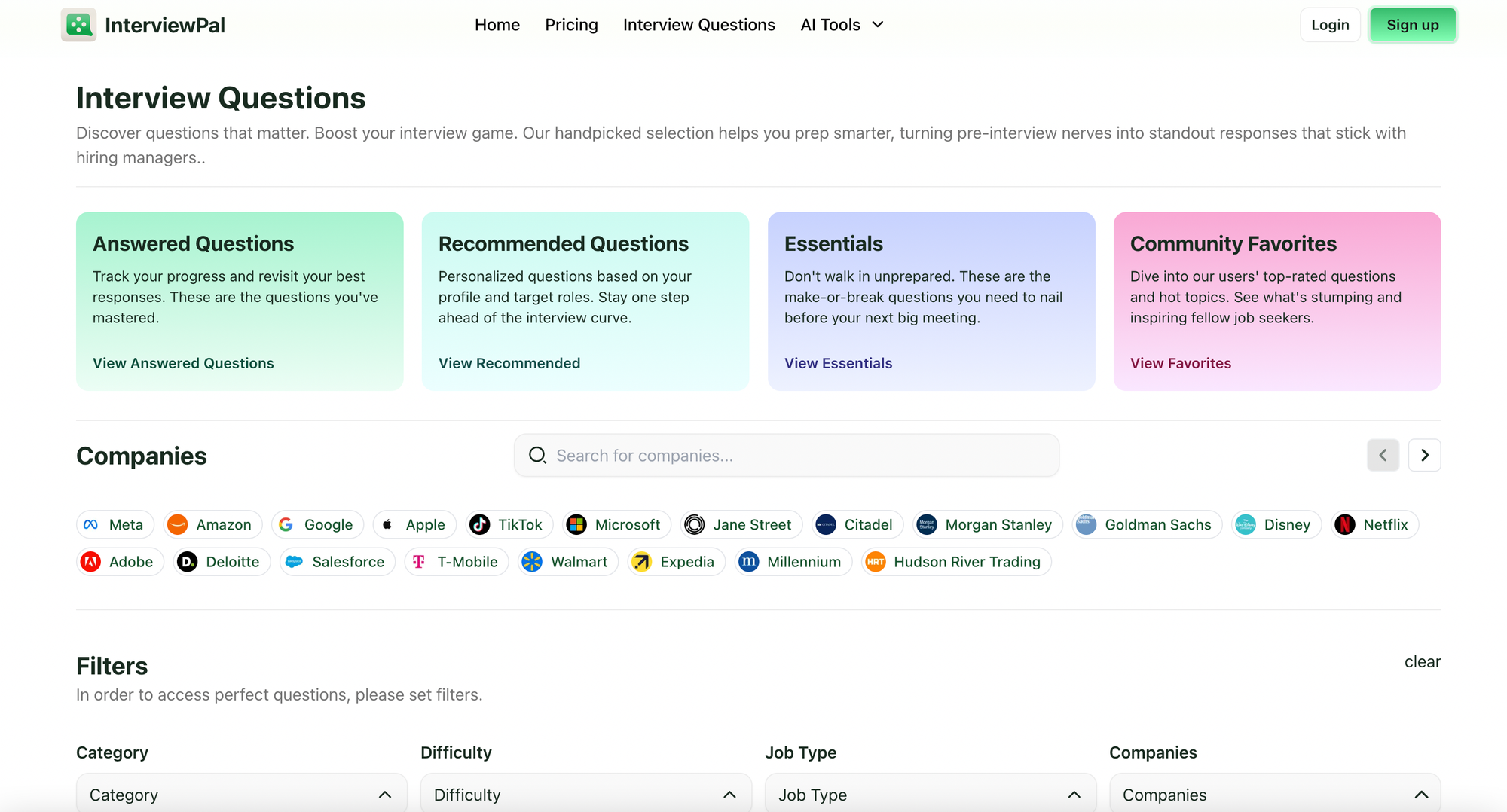In the competitive world of job hunting, standing out in an interview can make all the difference. One technique that consistently helps candidates shine is the STAR method. But what exactly is STAR, and how can you use it to land your dream job? Let's dive in.
What is the STAR Method?
STAR stands for Situation, Task, Action, and Result. It's a structured approach to answering behavioral interview questions - those tricky "Tell me about a time when..." queries that make many job seekers sweat.
Here's a quick breakdown:
- Situation: Set the scene. What was the context?
- Task: Explain your responsibility. What needed to be done?
- Action: Describe what you did. How did you tackle the challenge?
- Result: Share the outcome. What was achieved?
Simple enough, right? But the devil's in the details. Let's explore how to make each component work for you.
Breaking Down the STAR Method
Situation: Setting the Stage
Think of this as the opening scene of a movie. You need to quickly establish the who, what, where, and when. Keep it concise but informative.
Good example: "In my role as marketing manager at XYZ Corp, we faced a sudden 30% drop in social media engagement just two weeks before a major product launch."
Bad example: "So, there was this problem at work..."
The first example immediately sets the context, giving the interviewer a clear picture of the stakes involved.
Task: Defining Your Role
Here, you need to outline what was expected of you. What was your specific responsibility in addressing the situation?
Good example: "As the team lead, it was my job to identify the cause of the engagement drop and develop a strategy to boost our numbers before the launch."
Bad example: "I had to fix things."
The good example clearly defines the candidate's role and responsibilities, showing leadership and initiative.
Action: Showing Your Problem-Solving Skills
This is where you get to showcase your skills. Be specific about the steps you took. Use "I" statements to clarify your personal contributions, even if you were part of a team effort.
Good example: "I conducted a thorough analysis of our social media metrics, identifying a recent algorithm change as the primary cause. I then redesigned our content strategy, focusing on more video content and user interactions. I also implemented A/B testing on our posts to optimize engagement."
Bad example: "We worked on improving our social media."
The good example provides a clear, step-by-step account of the actions taken, demonstrating analytical skills and adaptability.
Result: Proving Your Impact
Numbers talk. Whenever possible, quantify your results. If you can't provide exact figures, give a clear indication of the positive impact.
Good example: "Within a week, our engagement rates increased by 45%, surpassing our pre-drop levels. The product launch exceeded expectations, with social media driving 60% of our initial sales, up from 35% in previous launches."
Bad example: "Things got better."
The good example not only quantifies the immediate result but also ties it to broader business outcomes, showing the candidate's understanding of the bigger picture.
Common STAR Method Pitfalls
Even with a solid framework, it's easy to stumble. Here are some common mistakes and how to avoid them:
- Choosing Weak Examples: Not every problem you've solved is interview-worthy. Choose situations that highlight your most impressive skills and align with the job requirements.
- Rambling: Stick to the point. Practice your STAR stories so you can deliver them concisely, typically in 2-3 minutes.
- Focusing Too Much on the Situation: While context is important, the meat of your story should be in the Action and Result sections.
- Downplaying Your Role: This is your time to shine. Be clear about your personal contributions, even in team settings.
- Forgetting the Result: Always circle back to the outcome. If you can't remember specific numbers, focus on the positive impact and any lessons learned.
Advanced STAR Techniques

Once you've got the basics down, here are some advanced techniques to elevate your STAR responses:
The PAR Variation
Some interviewers prefer PAR: Problem, Action, Result. It's essentially the same as STAR, but it combines Situation and Task into Problem. Use whichever feels more natural for your story.
The CARLOS Method
For those who want to go a step further, try CARLOS:
- Context
- Action
- Result
- Learning
- Outstanding contribution
- Summarize
This expanded version allows you to highlight personal growth and unique contributions.
Tailoring Your Stories
Research the company and role beforehand. Choose STAR examples that align with the organization's values and the job's key responsibilities. This shows you're not just prepared, but also a great fit.
The Feedback Loop
End your STAR story with any feedback you received or lessons learned. This demonstrates self-awareness and a commitment to continuous improvement.
Example: "After the successful launch, my manager commended our team's adaptability. This experience taught me the importance of staying flexible and data-driven in our marketing strategies."
Preparing Your STAR Arsenal
Don't wait until the interview to think of examples. Build a repertoire of STAR stories covering various scenarios:
- Leadership
- Conflict resolution
- Problem-solving
- Overcoming failure
- Adapting to change
- Meeting deadlines
- Exceeding expectations
Aim for at least two stories for each category. Write them down, refine them, and practice delivering them out loud.
STAR Method in Action: Real-World Examples
Let's look at two full STAR responses for different scenarios:
Scenario 1: Improving Team Productivity
Situation: "As a project manager at ABC Tech, I inherited a team that consistently missed deadlines, causing friction with clients."
Task: "My responsibility was to improve the team's productivity and ensure we met our project timelines."
Action: "First, I conducted one-on-one meetings with each team member to understand their challenges. I discovered a lack of clear processes was causing confusion and duplication of efforts. I implemented a new project management system, clearly defining roles and responsibilities. I also introduced daily stand-up meetings to improve communication and identify bottlenecks early."
Result: "Within two months, our on-time project completion rate improved from 60% to 95%. Client satisfaction scores increased by 40%, and team morale significantly improved, leading to a 25% reduction in turnover."
Scenario 2: Handling a Customer Crisis
Situation: "While working as a customer service representative at XYZ Retail, we faced a major crisis when our online ordering system crashed during Black Friday, our busiest sales day."
Task: "As the senior rep on duty, I needed to manage the influx of customer complaints and mitigate damage to our brand reputation."
Action: "I quickly drafted a clear, empathetic message explaining the situation, which was posted on our website and social media channels. I then organized our team to prioritize calls based on order value and customer loyalty status. For our top-tier customers, I personally called to apologize and offer exclusive discounts on future purchases."
Result: "Despite the system outage, we retained 85% of the affected orders once the system was back online. Customer satisfaction surveys showed that 78% of those affected felt the situation was handled well, and we saw a 20% uptick in our loyalty program sign-ups in the following month."
Making STAR Work for You
The STAR method isn't just about answering interview questions—it's about storytelling. You're not just reciting facts; you're painting a picture of your capabilities, your approach to challenges, and your potential value to the company.
Remember, practice makes perfect. The more you work with the STAR method, the more natural it will become. Soon, you'll find yourself thinking in STAR format whenever you face a challenge at work, constantly building your repertoire of impressive interview answers.
By mastering the STAR method, you're not just preparing for interviews; you're developing a skill that will serve you throughout your career. It will help you articulate your achievements in performance reviews, negotiate raises, and even recognize areas for personal growth.
So, start building your STAR stories today. Your next great career move could depend on it.
Taking Your Interview Preparation to the Next Level
While understanding and practicing the STAR method is crucial, it's just one piece of the interview preparation puzzle. To truly excel, you need to apply this technique in realistic interview scenarios and receive objective feedback on your responses.
This is where our tool InterviewPal can make a significant difference. InterviewPal is an AI-powered platform designed to complement your STAR method preparation by:
- Providing Realistic Practice: InterviewPal offers a wide range of industry-specific interview questions, allowing you to apply your STAR responses in context.
- Offering Instant Feedback: After each practice session, you receive detailed feedback on your answers, helping you refine your STAR stories and delivery.
- Tracking Your Progress: The platform monitors your improvement over time, showing you which areas of your STAR responses need more work.
- Simulating Real Interview Pressure: By mimicking actual interview conditions, InterviewPal helps you become more comfortable using the STAR method under pressure.
- Expanding Your STAR Repository: Through repeated practice with varied questions, you'll naturally build a larger collection of STAR stories to draw from in real interviews.
Remember, while the STAR method is a powerful tool, its effectiveness ultimately depends on how well you can apply it in real-world situations. Platforms like InterviewPal offer a bridge between theory and practice, helping you refine your STAR technique and boost your overall interview performance.
So, as you continue to build and refine your STAR stories, consider incorporating tools like InterviewPal into your preparation routine. With a solid grasp of the STAR method and ample practice applying it, you'll be well-equipped to tackle any behavioral interview question that comes your way. Your next great career move is within reach—go out there and shine!



